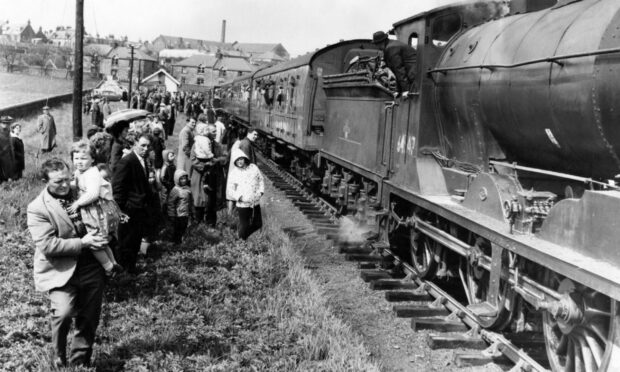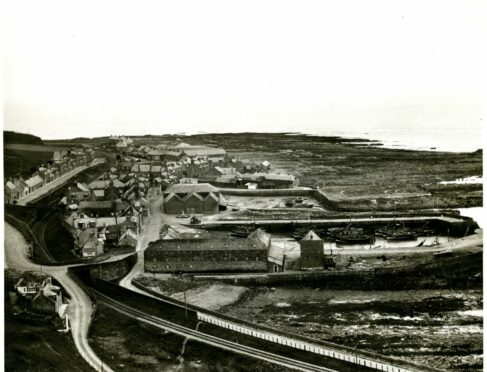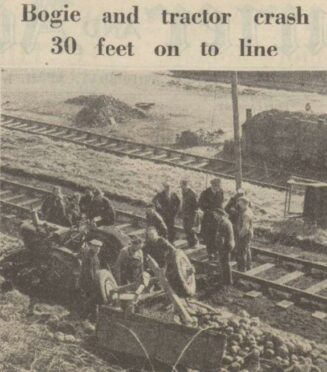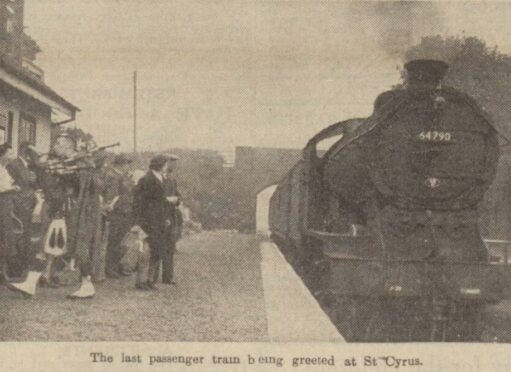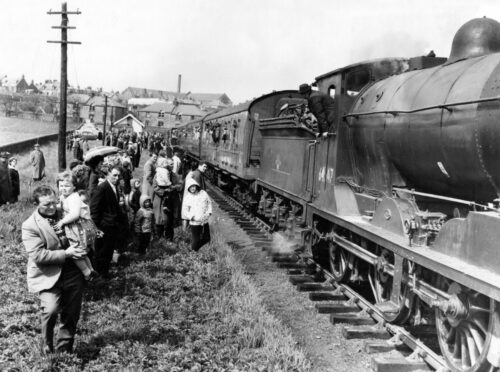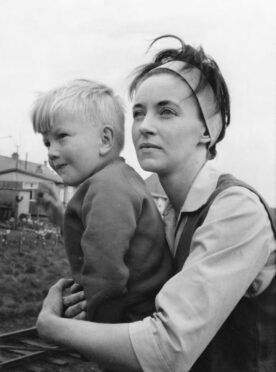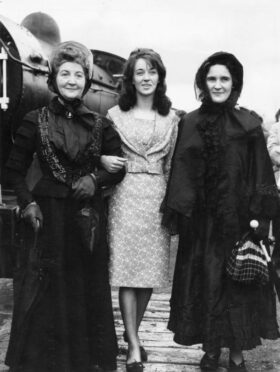The last passenger train between Bervie and Montrose was cheered down the line, showered in confetti and piped to its final destination 70 years ago.
The scenes on September 29 1951, although tinged with sadness, were not dissimilar to the branch line’s celebratory opening day nearly 85 years before.
The 12-mile stretch linking the coastal communities opened in November 1865 when a small but powerful train – “The Bervie” – pulled four carriages packed with passengers.
Large crowds gathered at its Montrose terminus to greet the first train arriving down the new branch line from Bervie.
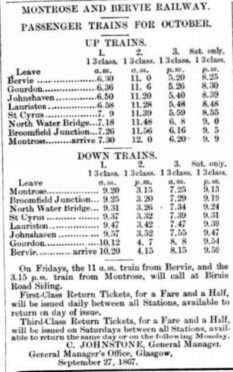
On October 1 1881, the popular line was transferred from the Caledonian Railway Company to the North British Company.
But exactly 70 years later – October 1 1951 – marked the first day of the withdrawal of passenger trains between Bervie and Montrose.
Talks of removing passenger services from Bervie first began in January 1951 when the death knell sounded for rural branch lines across Britain.
The proposals were met with public protest.
The Railway Executive said the average number of passengers on most trains between the towns was fewer than 10, increasing to 22 “on the odd occasion”.
And British Railways argued it was no longer financially viable to run trains for so few passengers, especially with bus routes nearby.
But the line passed through small communities like St Cyrus, Johnshaven and Gourdon, where buses did not necessarily stop nearby.
At a Montrose Town Council meeting in March 1951, the town’s provost John Butchart said some passengers would face a two-mile walk to catch a bus.
It was agreed that the surrounding town councils should unite to petition the Railway Executive and local MPs to save the line.
Angus county convener Mr McCaig argued that “the railways were the servants of the public” and that revenue from busy routes elsewhere should support the smaller branch lines.
And anger was expressed that communities had been given no say in the proposals or offered any alternatives.
But the attempts were in vain, and the closure of the line to all but freight traffic was formally announced at the start of September.
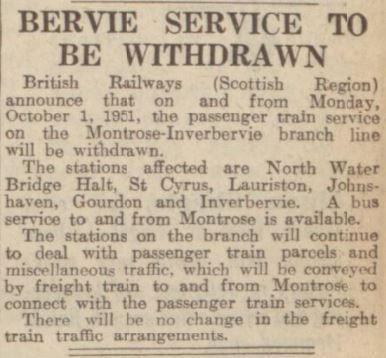
September 29 1951 saw the Bervie Express make its final farewell journey along the line, but not without fanfare from the communities she had served for so long.
Driven by Archibald Johnstone, the 5.54pm Inverbervie to Montrose train that day was was the busiest for months – carrying 14 passengers.
Both travellers and rail staff “made a night of it” and “it was all cheering, waving and laughing when the train left Bervie and called at Gourdon and Johnshaven”.
And the community went all out at St Cyrus, the penultimate stop, with local postman Archibald Duncan dressing in his full pipe-major’s regalia to greet the train.
The St Cyrus stationmaster’s wife stepped up onto the footplate to present driver Johnstone with a bouquet.
He and his fireman Walter Greig and guard Reith Coull, were “showered in confetti and rose petals”.
And the train puffed its way out of the station for the last time, to the tune of “Will Ye No’ Come Back Again?” on the bagpipes.
It was a sad day for one passenger, Herbert Hay, who had made the journey to and from St Cyrus for work at the Ministry of Labour in Montrose, twice a day, six days a week since 1919.
He told the Courier: “I’m terribly disappointed that it had to be taken off. I’ll miss it very much.
“It’s so much quicker and more comfortable than the bus, but there’s nothing else for it now.
“I have made this trip thousands of times before, but I just want to have a last kick.”
One collector of railway memorabilia spent more than 10 shillings buying third class tickets from Montrose to each of the stations down the Bervie line for nostalgia.
But the stationmaster at Montrose was less sympathetic and quipped: “Passengers can have no quibble, they refused to use the train.”
The line became even quieter on October 1 when the only traffic was a single goods train a day.
But this too was withdrawn in 1966, when the line – like many others – closed altogether under Dr Beeching’s cuts.
To mark the true end of the line, a Johnshaven woman – Mary Officer – organised a sentimental rail journey to say goodbye.
British Rail charged Mary £200 to have a passenger steam train and carriages take to the tracks for the first time since 1951.
Mary organised the trip down memory lane for May 23 1966 and members of the public joined in by donning period costumes to represent the rail line’s past.
